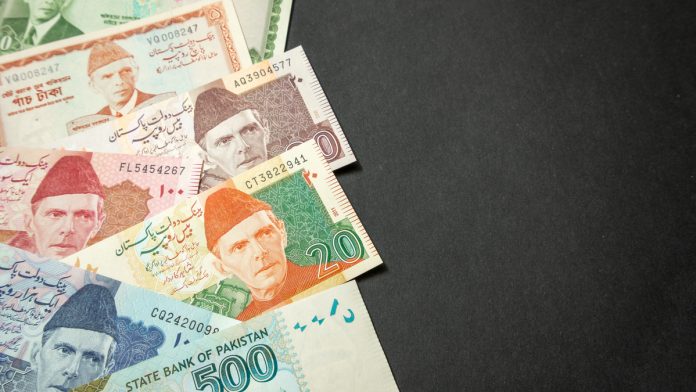- Pakistan Rupee (PKR) is trades lower
- Pakistan domestic equities drop on covid concerns
- US Dollar (USD) trades at 6 week low versus major peers
- USD traces treasury yields lower
The US Dollar Pakistan Rupee (USD/PKR) exchange rate rising on Monday, after booking mild losses across the previous week. The pair shed -0.5% across the previous week, settling on Friday at 152.19. At 11:00 UTC, USD/PKR trades +0.5% at 153.30.
Special Assistant to the Prime Minister Dr Faisal Sultan said that the government needs to vaccinate 40 – 50 million people by the end of the year. He added that even with a huge vaccination drive, new variants of the illness will remain a threat.
Concerns over rising covid cases in countries such as Pakistan and India are starting to unnerve investors. The benchmark Karachi 100 closed -0.87% lower as investors sold out of Pakistan domestic equities.
Oil prices are on the decline after a stellar rally in across the previous week. West Texas Intermediate trades -0.2% as rising covid cases stoke demand outlook concerns. Even so oil holds comfortably above $60.00 at $63.10.
The US Dollar is rising versus the Rupee. However, it is falling versus its major peers. The US Dollar Index, which measures the greenback versus a basket of major currencies trades -0.48% at the time of writing at 91.13 its lowest level in 6 weeks.
The US Dollar is falling, tracing US treasury yields lower. The benchmark 10 year US treasury yields trades at a 5 week low. Interestingly yields have declined despite inflation data picking up. Often yields rise when inflation expectations rise.
Last week both US consumer price inflation and retail sales beat forecasts suggesting that inflation could be on the rise. However, the Fed has also been continuously reiterating the message that it believes any near term uptick in inflation will be short term. Therefore, the Fed is not expecting to tighten policy sooner.
There is no high impacting economic data for US Dollar traders today. Instead yields are likely to continue driving movement in the greenback.





